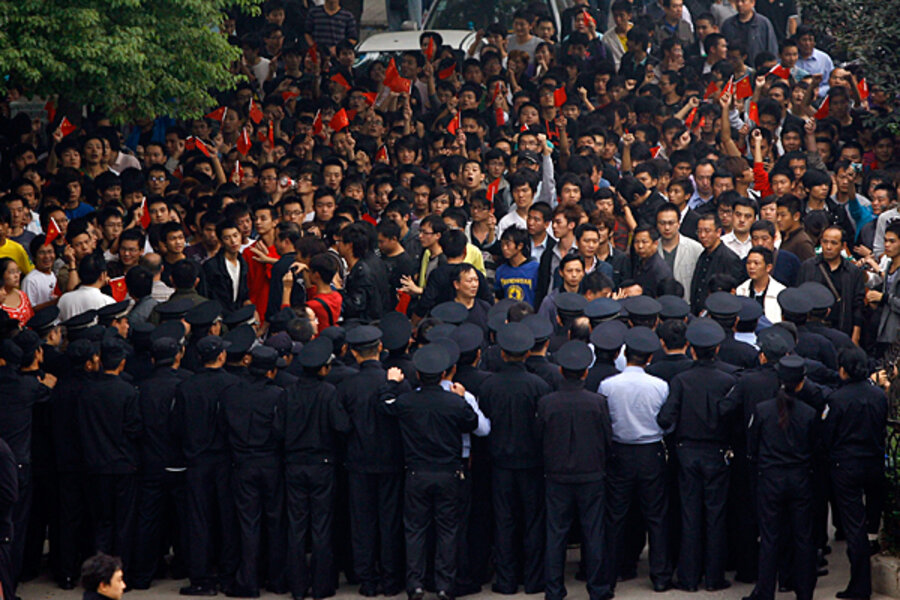Beijing allows anti-Japanese sentiment to flare in China amid massive protests
Loading...
| Dali, China
A news roundup.
Days of heated protests in both China and Japan over the ownership of a chain of islands are fueling tensions between the old foes.
It was near the disputed islands, referred to as Diaoyu in China but as Senkaku in Japan, that a Chinese fishing boat collided with two Japanese military vessels on Sept. 8. Japan detained the crew and diplomatic relations quickly broke down, with Beijing suspending ministerial-level talks with Tokyo.
Relations recently appeared on the mend, as Japanese Prime Minister Naoto Kan and Chinese Prime Minister Wen Jiabao held a short hallway conversation Oct. 4 in Brussels, followed by an Oct. 11 meeting between defense ministers in Hanoi.
But tensions are flaring up again, with massive nationalistic protests in both countries erupting Saturday and carrying into Monday.
Anti-Japanese demonstrators in China appear to be supported by the government, potentially signaling a new decision in Beijing to allow groups to exploit the island tiff. While protests in China are often quickly shut down or heavily controlled, Hong Kong's Apple Daily newspaper reported that the anti-Japanese protests were organized by government-sponsored university groups.
Japanese Prime Minister Naoto Kan has called the protests “regrettable,” while the Chinese Foreign Ministry described the anti-Japanese sentiment as “understandable.”
While just last month the Chinese government seemed keen not to allow anti-Japanese protesters to stir the pot, on Saturday thousands of people gathered in multiple cities throughout China to protest Japan’s claim over the island chain in the East China Sea, with mobs at times turning violent. Protesters vandalized Japanese businesses and smashed the windows of Japanese-brand cars, according to local media reports. One woman in Chengdu was eating at a restaurant along the demonstration route when marchers mistook her dress for a kimono, consequently demanding that she strip out of her clothes, according to the Associated Press.
The protests continued Sunday in Mianyang, near Chengdu, according to the International Business Times. On Monday, The Straits Times also reported an additional 1,000 people had gathered to chant anti-Japanese slogans in Wuhan, Hebei province.
Meanwhile in Japan, approximately 3,000 people gathered Saturday in Tokyo to protest China's claim over the islands, marching toward the Chinese Embassy, Bloomberg reported. According to Xinhua, the protesters were comprised mostly of right-wing conservatives particularly disappointed in what they said was their government’s acquiescence to pressure from China to release the fishing boat captain that had been detained since the incident.
Then on Monday, Agence Frace-Presse reported that Japanese media had revealed the existence of a secret pact between the Japanese and Chinese governments meant to deter such international incidents from arising in the region. The Asahi Shimbun's Aera magazine claims Japan violated the pact by detaining the fishing boat captain instead of deporting him.
Last month, in response to Japan's detention of the Chinese fishing boat crew, Chinese authorities seized four Japanese nationals in Shijiazhuang, Hebei province, accusing them of spying on the military. Three days later, on Sept. 23, Japan released the fishing boat captain, perhaps in hopes that the Chinese would do the same for the four Japanese detainees.
Instead, China responded by demanding an official apology from Japan, and did not release the last Japanese detainee until Oct. 9.
A chance to mend ties may present itself later this month, when a gathering of Asian leaders in Hanoi will provide an opportunity for the two nations' premiers to meet.





